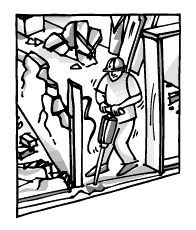 It turns out that socket bombs catapulted Maoist leaders into the interim legislature and brought combatants government dole.
It turns out that socket bombs catapulted Maoist leaders into the interim legislature and brought combatants government dole.The United Nations says it can account for all but two of the 3,430 weapons the military says the rebels seized from them. From their initial reaction, the generals seem to be satisfied with this 99.94169 recovery rate.
Ian Martin, the head of the UN Mission in Nepal, agrees that there is a “striking difference” between the number of weapons registered and the number of combatants. “There would undoubtedly be a continuing argument as to whether the numbers showed that the Maoists had complied with their commitments to register all their weapons,” he adds in a remarkably candid session with reporters at UN headquarters in New York.
But the United Nations could not make a definite judgment, Martin says, placing the ball squarely on the government’s court. The government, for its part, is too busy figuring out a way to punish King Gyanendra for delivering his Democracy Day message.
Naturally, Prachanda has to speak. He claims a large number of the rebels’ tools of destruction were grenades and homemade bombs, which he said the United Nations did not register as weapons. (Not that those men and women are lazy. Who’s to say some of these crude devices wouldn’t have exploded in the monitors’ faces?)
Moreover, according to Prachanda, many of their weapons were destroyed in fire and swept away by river during the conflict. (Translation: if everyone’s so interested in exact numbers, why does no one ask Girija Prasad Koirala about the substantial arsenal the Nepali Congress maintained even after Indira Gandhi requisitioned those supplies for the Bangladesh front in the early 70s?)
Prachanda’s anger is understandable. The madhesi and janjatis movements have exposed the big lie that the Maoists were fighting for ethnic and geographical equity.
From the way the Supreme Court ordered the release of royalist ministers, the Maoist supremo can’t keep blaming the palace for the trouble in the Terai. Unless, of course, he is prepared to dismiss the justices as royal stooges. In that case, the Maoists would have to become more explicit in their revisionism. They can’t go on insisting that an institution that supposedly has one branch of government in its pocket is in any way on its last breath.
With Martin adding his voice to fears that the constituent assembly elections might not be held on schedule, Prachanda’s last political link with the “People’s War” is slipping away. At one public meeting, Prachanda insists the interim legislature will vote to declare a republic. But his own MPs can’t enter the chamber unarmed.
At another meeting, the Maoist supremo claims a legislative vote abolishing the monarchy won’t amount to much until the people start flooding the streets again. Since the Maoists lacked both the courage and conviction to storm the Narayanhity during the height of April Uprising, it’s unlikely they’ll get a second chance.
Reframing the debate, Prachanda then claims one group has allocated Rs.600 million to kill him. Now why would he believe his head carries such an awesome price, especially with all those pressure cooker bombs lying unaccounted for?



